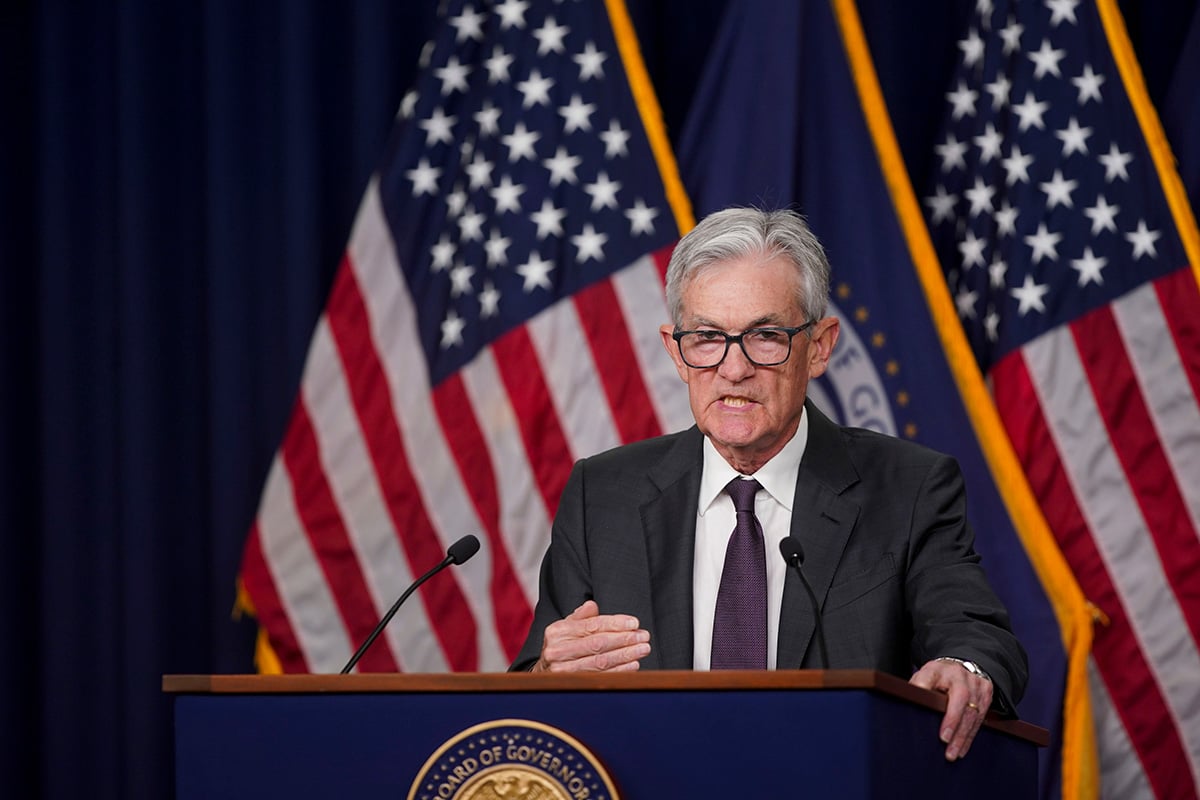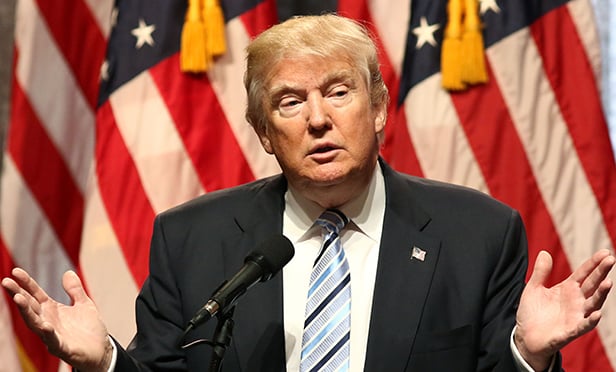 While treasurers have been dealing with low interest rates for years, they're now facing negative rates on bank deposits in some parts of the world. The prospect of paying a bank to hold company funds has an Alice in Wonderland feel to it, but central banks in a number of countries have implemented monetary policies that charge negative rates on the deposits that banks hold with the central banks. Banks in turn are passing those negative rates on to commercial depositors.
While treasurers have been dealing with low interest rates for years, they're now facing negative rates on bank deposits in some parts of the world. The prospect of paying a bank to hold company funds has an Alice in Wonderland feel to it, but central banks in a number of countries have implemented monetary policies that charge negative rates on the deposits that banks hold with the central banks. Banks in turn are passing those negative rates on to commercial depositors.
Where rates are negative.
Negative rates were seen first in Europe, where the central banks of Denmark, Sweden, and Switzerland set benchmark rates below zero as they tried to spark economic growth and limit the appreciation of their currencies. The European Central Bank (ECB) moved to a -0.2% deposit rate in two steps in 2014 and then pushed its rate to -0.3% in December. In January, the Bank of Japan joined in, setting a rate of -0.1% on the excess reserves it holds for financial institutions. The market is waiting to see whether the ECB goes still more negative at Thursday's meeting. The central banks that have imposed negative rates generally charge them on only a portion of the reserves they hold for financial institutions.
It's not likely to happen in the U.S.
The shift to negative rates by the ECB and the Bank of Japan led to talk that the Federal Reserve might be the next to adopt a negative rate policy. But recent data suggest the U.S. economy is continuing to recover and the Federal Reserve need not experiment with below-zero rates.
A negative interest rate policy “shouldn't even be a topic in the U.S. because additional monetary stimulus is not needed,” said Ward McCarthy, chief financial economist at investment bank Jefferies.
The U.S. economy is “in much better shape than anyplace else, at least in part because the Fed was really aggressive really early in this cycle and continued to be aggressive,” he said.
McCarthy also argued that negative interest rates are not appropriate for all economies. “I think it makes sense for small open economies that rely heavily on exports, and therefore their currency, for growth,” he said. “It made sense for Switzerland; it makes sense for Denmark.”
But for a large economy like the U.S. that relies much less on exports, the benefits of negative rates would be debatable, McCarthy said. At the same time, the policy would pose financial and political risks for the Fed.
What does this means for treasurers?
Treasurers may not need to worry about negative rates on their deposits in the United States, but they could well run into them in Europe.
Stephen Baseby, associate policy and technical director at the London-based Association of Corporate Treasurers (ACT), said that “either extremely low yields or negative yields are passing through to the corporate.”
The earnings rates on deposits under three months in sterling currently range from 0.2% to 0.4% a year, Baseby said. “Our colleagues in euros are beginning to find they're being offered negative rates.
“It creates some interesting anomalies,” he added, noting that some Swiss companies were holding cash in current accounts, which don't pay interest, to avoid being charged negative rates. “But most bank regulators have understood that one—they put limitations on money in current accounts.”
Baseby and others note that deposit rates in Europe are being driven lower not just by central banks' negative interest rate policies, but by Basel III's liquidity coverage ratio, which increased the amount of high-quality assets banks have to hold against customers' deposits. And at this point, many of those high-quality assets, such as European sovereign bonds, offer negative yields.
“If I put 1 million pounds with a bank as a corporate, it has to go out and buy 400 pounds of gilts with it straight away, or if it's euros, central bank bonds over there,” Baseby said. “If those bonds have a negative rate, it immediately lowers the effective rate [the banks] can pay [the corporate], even if they lend that money out commercially.”
Baseby downplayed negative rates as a concern for treasurers, though. “The problem of very low returns on cash has been with us for quite some time,” he said. “The move to negative rates is annoying, but it's not catastrophic. It doesn't change the overall argument for holding cash.”
Negative rates and borrowing.
If interest rates are heading below zero, it seems that companies might benefit by being able to access money more cheaply, and certainly rates in the corporate bond market have headed lower.
But an October report from Bank of America Merrill Lynch economists notes that in Denmark there was an increase in the cost of both housing loans and loans to nonfinancial companies, while in Switzerland the cost of mortgages rose. The BofA economists suggest the move in borrowing costs may reflect “banks' attempt to offset the deposit rate effect on their profitability.”
Anthony Carfang, a principal at Chicago consultancy Treasury Strategies Inc., said the very imposition of negative rates can lead to concerns that affect borrowing rates.
 The negative rate “says there's a lot of risk in the market,” said Carfang, pictured at left. “So the risk premium gets much bigger. While we'll see lower borrowing costs than normal, we won't see borrowing costs go negative. And the spread between borrowing costs and investment yields will widen in a circumstance like this.”
The negative rate “says there's a lot of risk in the market,” said Carfang, pictured at left. “So the risk premium gets much bigger. While we'll see lower borrowing costs than normal, we won't see borrowing costs go negative. And the spread between borrowing costs and investment yields will widen in a circumstance like this.”
Baseby noted that many corporates in Europe have found their bank facilities contain interest rate floors. “The rate cannot go below a number that is positive,” he said. “The central bank's artificially low rate is not being passed through.
“The one opportunity is when borrowing facilities need to be renewed or are having other terms changed in them; the borrowers are using those opportunities to negotiate out the floors,” he added.
In the United States, as companies renew credit lines, some banks are now adding floors on interest rates into the agreements, said Craig Martin, executive director of the Corporate Treasurers Council at the Association for Financial Professionals (AFP). Interest-rate floors are also being added to swaps agreements, he said.
How to cope with negative rates.
Carfang said negative rates are another factor pushing treasurers to improve cash forecasting, including forecasting their cash by jurisdiction. “Then with those numbers, you move the money around to give you the optimum return,” he said.
“The better your forecast, the further out you can invest your cash,” he said. “There's no country that has negative rates all the way out to the long term.”
Multinational treasuries tend to operate treasury centers and are able to sweep cash from the accounts of their local business units to the treasury center, allowing them to move excess funds to a country where they can get positive rates, said Tom Deas, a vice president at FMC and former chairman of both the National Association of Corporate Treasurers and the International Group of Treasury Associations. Large companies also have the ability to handle the foreign exchange issues involved, he said.
For treasurers of multinationals, negative rates increase the importance of the mobility of cash and “just-in-time funding policies,” so that cash can be swept to a country where it can be invested at a positive, rather than a negative, rate, Deas said. “It would be a big disadvantage if there were cash in a country that had negative rates and a borrowing need in a country with positive rates—you'd bear the worst of both worlds.”
But the ACT's Baseby cited foreign exchange exposures “and, in the case of the EU, the quite burdensome reporting requirements” related to using derivatives as obstacles to sweeping cash from one currency to another, and predicted that treasurers “will tend to stay in their natural currency.
“What they are doing is looking at alternative means of depositing cash,” he said. “Some are looking at the repo market, which at times offers an enhanced yield.”
Treasurers are also investing directly in short-term corporate paper and making more use of separately managed accounts through asset managers operating in Europe, said AFP's Martin. Companies can also look at natural offsets, he said, such as using the cash they have in countries with negative rates to make acquisitions or invest in the business.
Carfang said treasurers also need to stress test, keeping in mind that their experience in moving from, say, an 8% rate down to 4% might not be relevant when interest rates are extremely low or negative.
“If you really did get charged negative rates, you might actually change your behaviors in some radical ways,” he added. “If a bank was really going to charge you 25 basis points to hold your money, rather than have the bank charge you, [you might] pay all your bills or pay some of your suppliers in advance and let them hold the cash. That may be your best investment option.”
Complete your profile to continue reading and get FREE access to Treasury & Risk, part of your ALM digital membership.
Your access to unlimited Treasury & Risk content isn’t changing.
Once you are an ALM digital member, you’ll receive:
- Thought leadership on regulatory changes, economic trends, corporate success stories, and tactical solutions for treasurers, CFOs, risk managers, controllers, and other finance professionals
- Informative weekly newsletter featuring news, analysis, real-world case studies, and other critical content
- Educational webcasts, white papers, and ebooks from industry thought leaders
- Critical coverage of the employee benefits and financial advisory markets on our other ALM sites, PropertyCasualty360 and ThinkAdvisor
Already have an account? Sign In Now
*May exclude premium content© 2025 ALM Global, LLC, All Rights Reserved. Request academic re-use from www.copyright.com. All other uses, submit a request to [email protected]. For more information visit Asset & Logo Licensing.










